In the ever-evolving landscape of commercial kitchen appliances, the panini press has emerged as a staple in fast-casual and gourmet dining establishments. This compact yet versatile appliance has captured the hearts of both chefs and consumers alike, offering a quick and delicious solution for a variety of grilled sandwiches. As the demand for convenience and quality continues to rise, the commercial panini press market is poised for significant growth, with a particular focus on Europe and North America. This article delves into the intricacies of the market, exploring the latest trends, key players, technological advancements, consumer preferences, regulatory environments, and the future outlook for this dynamic sector.
Introduction to Commercial Panini Press Market in Europe and North America
The commercial panini press market in Europe and North America has witnessed a significant surge in recent years, driven by the growing popularity of gourmet and casual dining experiences. With a rich culinary heritage and a penchant for innovation, these regions have become hotbeds for the development and adoption of high-quality, commercial-grade panini presses.
In Europe, the market is particularly vibrant, with countries like Germany, Italy, and France leading the charge in both consumer demand and technological advancements. The continent’s diverse food culture, with its emphasis on fresh ingredients and quick, delicious meals, has made the panini a staple in many a café and restaurant menu. North America, on the other hand, has seen the panini evolve from a niche item to a staple, especially in the bustling coffee shops and fast-casual dining sectors.
The commercial panini press market is not just about the panini itself; it’s a reflection of the broader trends in the foodservice industry. The rise of health-conscious consumers, coupled with the demand for convenience, has led to a demand for versatile cooking appliances that can offer a variety of options in a single unit. This has spurred manufacturers to develop panini presses that can handle a range of foods, from sandwiches to flatbreads and even wraps.
One of the key drivers of this market is the rise of the “foodie” culture, where food enthusiasts seek out unique and authentic experiences. This has encouraged chefs and restaurant owners to experiment with different ingredients and cooking techniques, making the commercial panini press a valuable tool for creating a wide array of menu items.
The European and North American markets also benefit from a strong infrastructure of foodservice distributors and retailers, which ensures that the latest products from commercial panini press manufacturers reach the end-users efficiently. This distribution network is crucial for the market’s growth, as it allows for timely updates and the availability of new models and features.
In terms of technology, the commercial panini press market has seen some remarkable advancements. Modern units are equipped with features such as adjustable heat settings, non-stick surfaces, and even digital displays for precise temperature control. These innovations not only enhance the cooking experience but also improve the longevity of the appliance.
Another interesting aspect of the commercial panini press market is the customization that manufacturers offer. Many businesses opt for customized solutions that align with their brand and the specific requirements of their kitchen. This includes custom branding on the presses, as well as modifications to the size and shape of the cooking surfaces to cater to specific menu items.
Despite the growth and innovation, the market is not without its challenges. Competition is fierce, with a plethora of manufacturers vying for market share. Additionally, the high cost of some advanced models can be a barrier to entry for smaller businesses or startups. However, this competition also drives innovation and encourages manufacturers to continually improve their offerings.
Consumer preferences play a significant role in shaping the market. There is a growing trend towards sustainability and eco-friendly products, which is influencing the design and production of commercial panini presses. Environmentally conscious businesses are increasingly seeking out appliances that are energy-efficient and made from recyclable materials.
The regulatory environment also plays a crucial part in the commercial panini press market. Europe and North America have stringent safety and quality standards that manufacturers must adhere to. This ensures that the products reaching the market are of the highest quality and meet the necessary health and safety regulations.
Looking ahead, the future of the commercial panini press market in Europe and North America appears promising. The continued growth of the foodservice industry, combined with the ever-evolving consumer demands, will likely lead to further advancements in technology and product design. The key will be for manufacturers to stay abreast of these trends and to continue to innovate in order to meet the needs of both the industry and the end consumer.
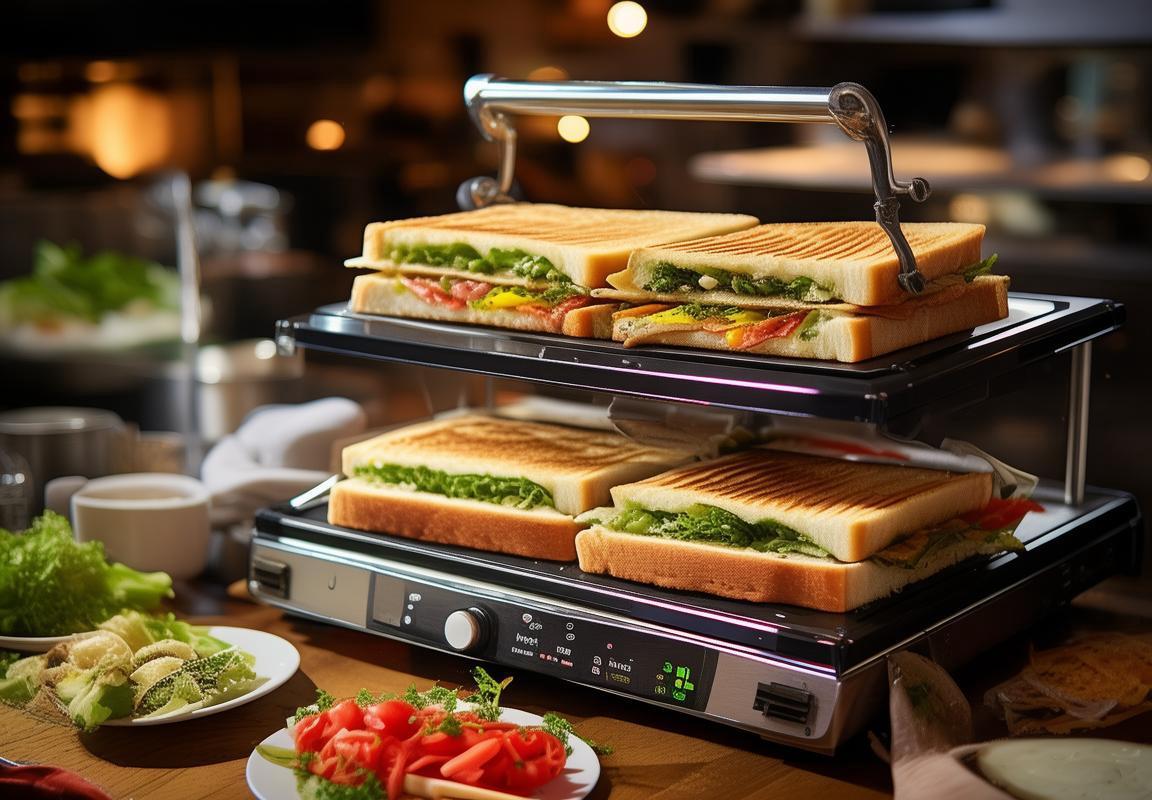
Market Dynamics and Growth Trends
The commercial panini press market in Europe and North America has been witnessing a surge in demand, driven by several dynamic factors. Consumers in these regions are increasingly seeking convenience and quality in their food preparation, and the panini press has emerged as a versatile kitchen appliance that meets these needs effectively.
The rise of the on-the-go lifestyle has significantly influenced the market dynamics. Busy professionals and families are looking for quick yet satisfying meal options, and the panini press offers a perfect solution for creating delicious sandwiches in minutes. This has led to a steady increase in sales, with a projected growth rate that is expected to outpace the overall kitchen appliance market.
Another key driver is the health and wellness trend. As consumers become more health-conscious, they are seeking alternatives to fast food that are both nutritious and convenient. The panini press allows for the use of fresh ingredients, controlling the sodium and fat content, which aligns with these health-oriented preferences.
In Europe, the market is further bolstered by the region’s culinary diversity. Countries like Italy, Germany, and France have a rich tradition of sandwich-making, and the commercial panini press is a natural extension of this culinary heritage. The popularity of gourmet sandwiches and the emphasis on quality ingredients have also contributed to the market’s growth.
In North America, the market is characterized by a strong focus on innovation and product differentiation. Manufacturers are continuously introducing new features, such as non-stick surfaces, adjustable heat settings, and various browning options, to cater to a wide range of consumer tastes and preferences. This innovation-driven approach has not only increased the appeal of the panini press but has also expanded its applications beyond just sandwiches.
The rise of foodservice establishments has also played a crucial role in the market’s growth. From cafes and delis to food trucks and restaurants, the commercial panini press has become a staple in many kitchens. These establishments are always looking for ways to offer unique and attractive menu items, and the panini press provides a means to do so with minimal training and equipment investment.
Demographic shifts are another factor shaping the market. The aging population in both Europe and North America, combined with the growing preference for casual dining, has created a market segment that is particularly receptive to the convenience and ease of use that the panini press offers.
Furthermore, the commercial panini press market is being influenced by the rise of e-commerce. Online sales have become a significant channel for the distribution of these appliances, offering consumers the convenience of shopping from home and a wider range of product choices.
Despite the positive outlook, the market is not without its challenges. Economic fluctuations can impact consumer spending, and competition from other kitchen appliances is fierce. However, the unique selling points of the panini press, such as its ability to create customized, on-the-spot meals, position it well for continued growth.
In terms of geographical distribution, Europe and North America are the leading regions, with the United States often taking the lead in terms of market size and growth. However, there are opportunities for expansion in other parts of the world, as the concept of convenience cooking continues to gain traction globally.
Lastly, the market is also being shaped by sustainability concerns. As consumers become more environmentally conscious, manufacturers are increasingly focusing on creating eco-friendly panini presses, including those made from recycled materials and energy-efficient designs. This sustainability trend is expected to grow in importance, influencing consumer choices and market dynamics moving forward.
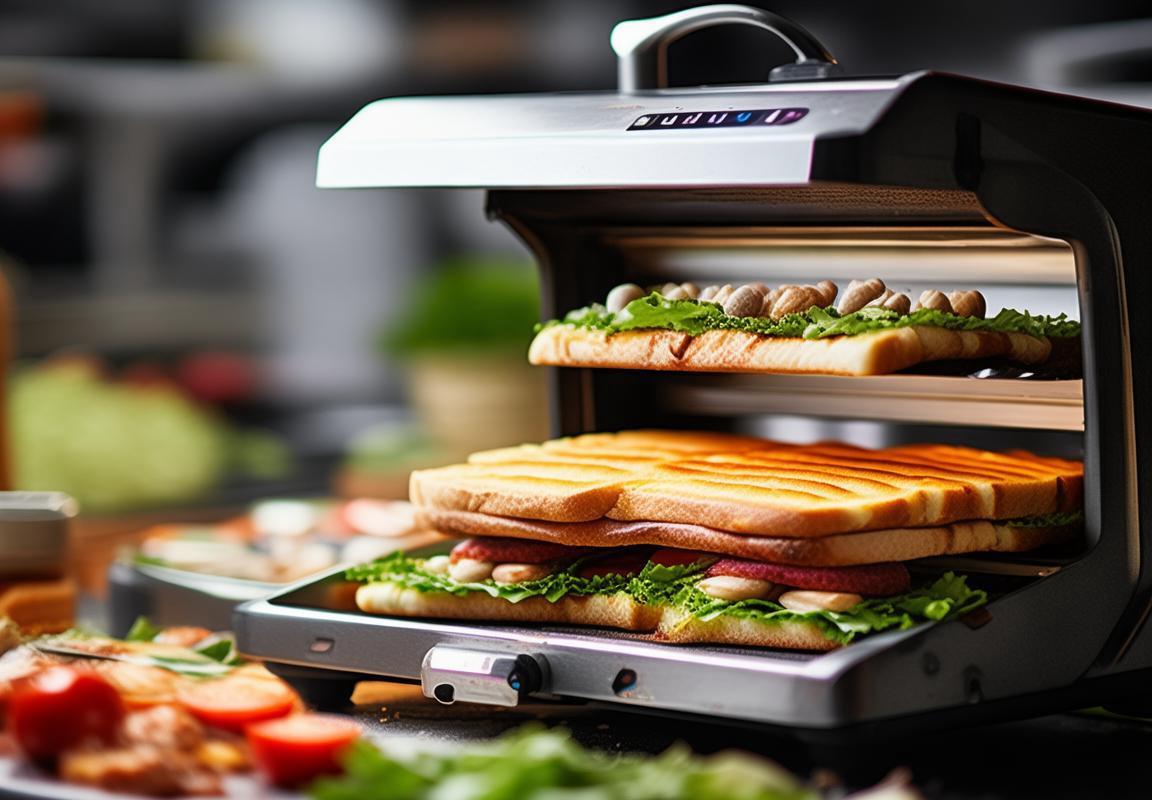
Key Players and Competitive Landscape
The commercial panini press market in Europe and North America is a dynamic sector, characterized by a competitive landscape featuring several key players. These companies range from established giants to innovative startups, each bringing their unique strengths and strategies to the table.
3.1 Established Giants with Strong Market Presence
Leading the pack are established brands with a long-standing presence in the commercial kitchen appliance industry. Companies like Breville and Hamilton Beach have become synonymous with quality and reliability. Breville, known for its high-end consumer appliances, has successfully expanded its offerings to the commercial sector, offering premium panini presses that cater to high-end restaurants and cafes. Hamilton Beach, on the other hand, has a broader range of products, targeting both mid-range and budget-conscious customers.
3.2 Innovative Startups with Niche Focus
The rise of startups has brought a fresh wave of innovation to the commercial panini press market. Companies like Ukonn and Sunbeam have emerged as key players, often focusing on niche markets or specific features. Ukonn, for instance, has gained attention for its compact and energy-efficient models, designed for small cafes and food trucks. Sunbeam, with its diverse range of appliances, offers a variety of panini presses that combine functionality with ease of use, appealing to both new and experienced chefs.
3.3 Global Players with Local Adaptation
Several international brands have entered the European and North American markets, bringing with them global standards and local adaptations. Siemens, for example, is known for its industrial-grade kitchen appliances, and has made a name for itself in the commercial panini press space with its durable and precise machines. Gaggenau, another global player, offers high-end panini presses that are a favorite among gourmet chefs and upscale dining establishments.
3.4 Strategic Partnerships and Collaborations
To maintain a competitive edge, many key players are engaging in strategic partnerships and collaborations. These alliances often involve research and development efforts to introduce new technologies and features. For instance, DeLonghi, a well-known name in home and commercial appliances, has collaborated with culinary experts to develop panini presses that not only deliver consistent results but also enhance the overall cooking experience.
3.5 Focus on Sustainability and Energy Efficiency
In recent years, there has been a growing emphasis on sustainability and energy efficiency within the commercial panini press market. Brands like Smeg have leveraged this trend by offering eco-friendly models that reduce energy consumption without compromising on performance. These efforts not only appeal to environmentally conscious businesses but also help to lower operational costs in the long run.
3.6 Customization and Bespoke Solutions
Customization is another area where key players are differentiating themselves in the market. Some companies offer bespoke solutions, allowing customers to tailor the panini press to their specific needs. This can range from adjustable heating elements to non-stick coatings that cater to different types of bread and ingredients. Brands like Nuwave have capitalized on this trend by providing a range of customizable options for commercial kitchens.
3.7 Distribution Channels and Retail Strategies
The success of key players in the commercial panini press market is also tied to their distribution channels and retail strategies. Many have a strong online presence, offering direct sales to businesses and providing detailed product information and support. Additionally, traditional brick-and-mortar retailers, such as specialty kitchen stores and restaurant supply outlets, serve as vital channels for reaching end-users.
3.8 Marketing and Branding Efforts
Marketing and branding play a crucial role in the competitive landscape. Key players invest heavily in marketing campaigns that highlight the unique selling points of their products. From social media promotions to in-store demonstrations, these efforts aim to create brand awareness and foster customer loyalty. Cuisinart, for example, has been successful in associating its brand with innovation and quality, which has helped maintain its position as a key player in the market.
3.9 Global Expansion and Market Penetration
As the commercial panini press market continues to grow, key players are looking to expand their reach globally. This involves not only entering new markets but also adapting to local regulations and preferences. Companies like Krups have successfully navigated these challenges, expanding their presence in Europe and North America while also exploring opportunities in emerging markets.
3.10 Future Prospects and Competitive Dynamics
Looking ahead, the competitive landscape in the commercial panini press market is expected to evolve further. As consumer preferences shift and new technologies emerge, key players will need to adapt and innovate to maintain their market share. The ongoing trend towards healthier eating and convenience foods is likely to drive demand for commercial panini presses, creating opportunities for those who can meet these evolving needs.
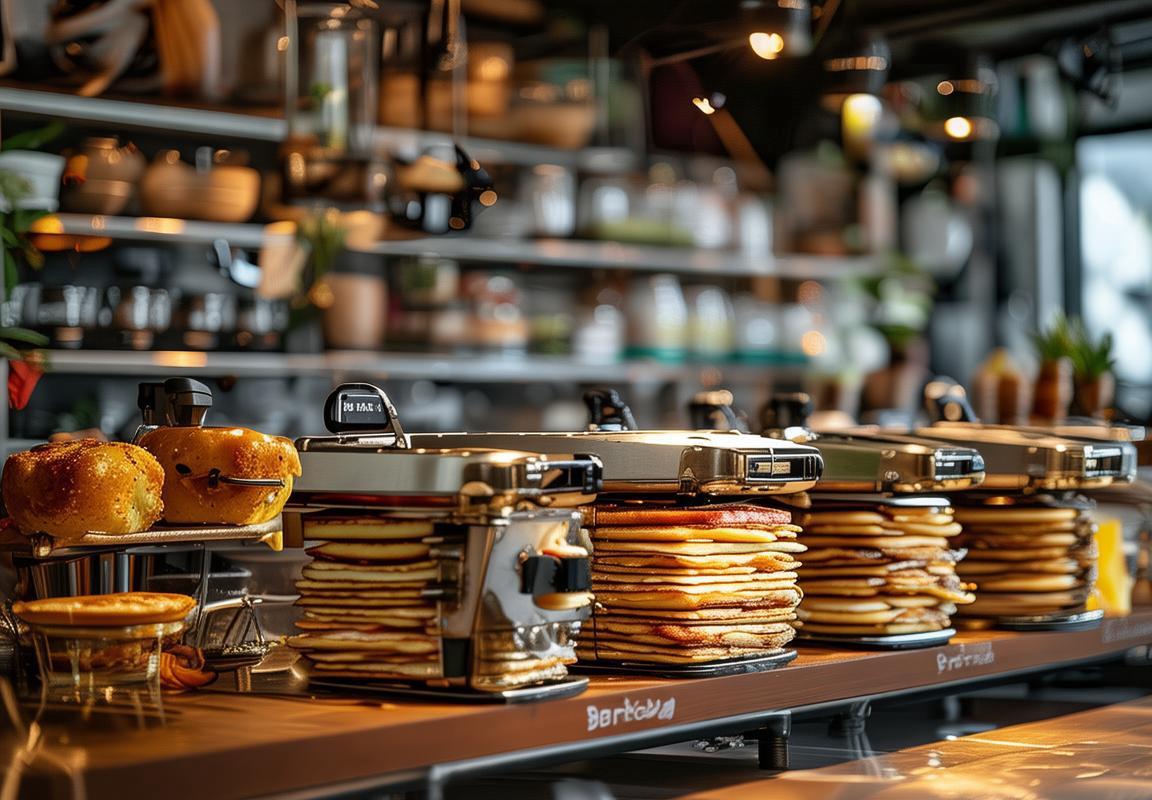
Innovations and Technological Advancements
In the ever-evolving landscape of commercial kitchen appliances, the panini press has seen a surge in innovation and technological advancements. These developments not only enhance the functionality of the devices but also cater to the changing demands of consumers and the foodservice industry.
One notable innovation is the integration of smart technology into commercial panini presses. These smart presses often come with digital controls that allow operators to set precise temperatures and cooking times. This not only ensures consistent results but also reduces the margin for error, which is crucial in high-volume kitchens. Brands like Breville and DeLonghi have been at the forefront of this trend, offering models with intuitive interfaces and programmable settings.
The inclusion of non-stick surfaces has also become a standard feature in modern commercial panini presses. This not only simplifies the cleaning process but also extends the life of the appliance. The use of high-quality materials like ceramic or titanium-coated plates ensures that the press remains non-reactive, preventing any unwanted flavors from being imparted to the food.
Efficiency is another key area where technological advancements have made a significant impact. Modern panini presses are designed to heat up quickly and maintain a consistent temperature throughout the cooking process. This not only reduces downtime between uses but also ensures that food is cooked to perfection in a shorter amount of time. The ability to cook multiple sandwiches simultaneously is also a feature that has gained popularity, allowing for increased productivity in busy restaurants and cafes.
Energy-saving features have become a focal point for manufacturers. With the growing emphasis on sustainability, commercial panini presses now come with energy-efficient designs that help reduce utility bills. These appliances often have features like automatic shut-off, which activate when the device is not in use, further contributing to energy conservation.
In terms of design, the commercial panini press has seen a shift towards sleeker and more modern aesthetics. The focus is now on creating appliances that not only perform well but also complement the kitchen’s decor. This includes the use of stainless steel and other durable materials that are easy to clean and maintain.
Safety features have also been a major area of improvement. Modern commercial panini presses are equipped with safety locks and cool-touch handles to prevent accidents. Some models even come with anti-jamming systems that prevent food from becoming stuck during the cooking process, thus reducing the risk of burns and damage to the appliance.
The rise of compact and countertop models has also been a significant development. These smaller appliances are perfect for cafes, delis, and food trucks where space is limited but demand for panini-style sandwiches remains high. These compact models are often just as powerful as their larger counterparts, offering a versatile solution for a variety of kitchen environments.
Customization options have expanded as well. Some manufacturers now offer panini presses with interchangeable plates, allowing operators to cook a variety of foods including wraps, flatbreads, and even pizzas. This versatility is particularly appealing to establishments that want to offer a diverse menu without the need for multiple appliances.
In the realm of materials, there has been a move towards more sustainable options. Biodegradable and compostable materials are being explored for the construction of pans and other accessories, aligning with the broader trend towards eco-friendly practices in the foodservice industry.
Lastly, the integration of IoT (Internet of Things) capabilities is beginning to emerge. While still in its early stages, some commercial panini presses are being developed with connectivity features that allow for remote monitoring and control. This means operators can manage their appliances from anywhere, ensuring optimal performance and minimizing the risk of downtime.
These innovations and technological advancements reflect the industry’s commitment to meeting the dynamic needs of the foodservice sector. As consumer preferences continue to evolve, it’s clear that the commercial panini press is set to remain a staple in the kitchen, with new features and functionalities driving its ongoing evolution.
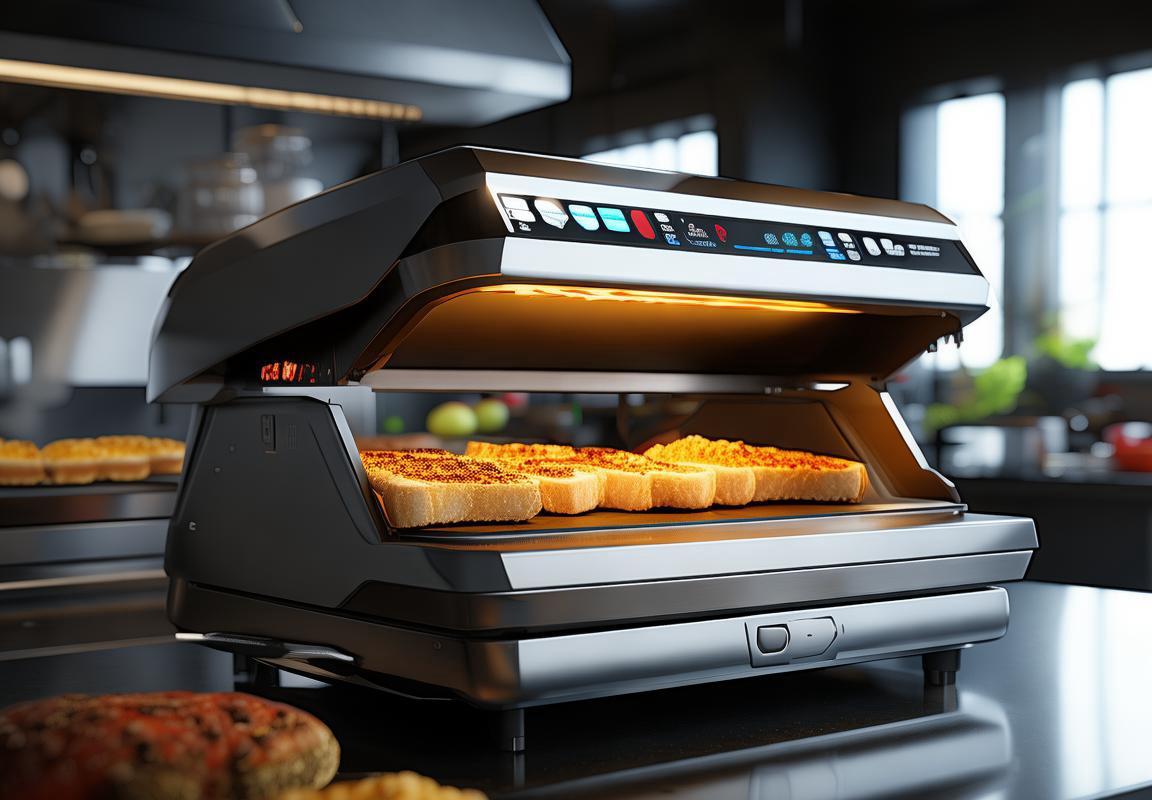
Consumer Preferences and Market Segmentation
The preferences of consumers in the commercial panini press market are shaped by a myriad of factors, each contributing to the complex segmentation of this niche within the kitchen appliances sector. From the need for speed and efficiency to the pursuit of quality and customization, here’s a closer look at the evolving consumer landscape and how it influences market segmentation.
-
Speed and Efficiency: Time is a valuable commodity in commercial kitchens, and panini presses have evolved to meet this demand. Consumers looking for quick service often prefer models that can cook multiple sandwiches simultaneously, with features like rapid heating elements and non-stick surfaces that reduce cook times.
-
Quality and Consistency: In the fast-food industry, consistency is key. Consumers seeking high-quality commercial panini presses look for units that can deliver uniform results batch after batch. The market is flooded with units that promise durability and consistent performance, with some brands boasting of long-lasting components and robust build qualities.
-
Customization and Versatility: The ability to customize is becoming increasingly important. Consumers are not just looking for a panini press to make sandwiches but also for appliances that can cater to a variety of recipes, from open-face to stuffed, or even pizzas. The ability to adjust cooking temperature and time allows for a wide range of menu options.
-
Hygiene and Easy Cleaning: In the commercial setting, maintaining cleanliness is crucial to avoid cross-contamination and to ensure food safety. Consumers gravitate towards panini presses with easy-to-clean surfaces, removable parts, and self-cleaning functions that help reduce downtime and maintenance.
-
Brand Reputation and Reliability: Reputation and reliability play a significant role in the purchasing decisions. Brands with a solid track record of producing reliable kitchen equipment are often preferred. Consumers rely on reviews, recommendations, and the brand’s history to gauge the reliability of the panini press they choose.
-
Eco-Friendly Features: With growing environmental concerns, consumers are increasingly looking for products that align with sustainable practices. Eco-friendly features such as energy-efficient heating elements and materials that are free from harmful chemicals are becoming more attractive.
-
Portability and Space Efficiency: For businesses operating in limited space, the portability and space efficiency of a panini press are important considerations. Consumers seek compact models that can be easily moved around or stored away when not in use.
-
Additional Features: Beyond the basics, consumers are interested in additional features that can enhance the user experience. These might include programmable settings, LED displays for precise temperature control, or even the ability to connect to kitchen management systems for streamlined operations.
-
Cost-Benefit Analysis: Price is always a factor, but it’s often balanced against the perceived value. Consumers looking for cost-effective solutions may prioritize certain features over others, or they might opt for a higher-end model if it promises a lower long-term cost due to its durability and efficiency.
-
Demographic Segmentation: The market is segmented not just by feature preferences but also by demographics. For example, high-end restaurants may prefer gourmet models that offer a premium cooking experience, while cafes and food trucks might be more interested in compact, affordable options.
-
Culinary Trends: Consumer preferences are also influenced by current culinary trends. The rise of artisanal bread and gourmet sandwiches has led to an increased demand for panini presses that can accommodate these specialized recipes.
-
Online Presence and Brand Engagement: In today’s digital age, the way brands engage with consumers through their online presence can significantly impact purchasing decisions. Consumers seek out brands with informative websites, social media engagement, and customer support that reflects a commitment to customer satisfaction.
The consumer preferences and market segmentation in the commercial panini press market are dynamic and multifaceted, reflecting the diverse needs of businesses across various industries. As the market continues to evolve, manufacturers must stay attuned to these preferences to create products that not only meet but exceed consumer expectations.
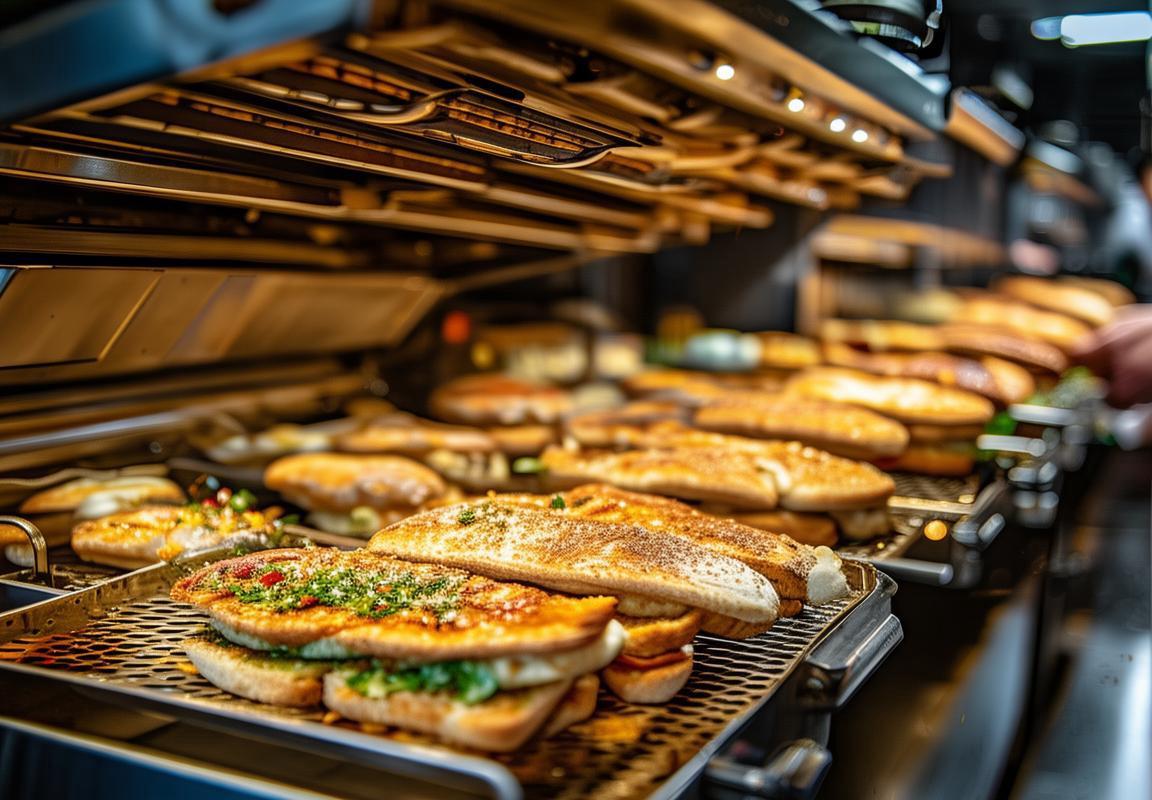
Regulatory Environment and Industry Standards
In the competitive landscape of the commercial kitchen appliances industry, the regulatory environment and industry standards play a pivotal role in shaping the market. These factors not only ensure safety and quality but also influence product design, manufacturing processes, and market entry for companies. Here’s an exploration of the regulatory environment and industry standards that govern the commercial panini press market.
The European Union (EU) has stringent regulations that apply to all food service equipment, including commercial panini presses. The General Product Safety Directive (GPSD) sets out the basic safety requirements for all products placed on the market, ensuring that they do not pose a risk to the health and safety of consumers. In the context of commercial panini presses, this means adhering to specific safety standards for electrical appliances, such as those outlined in the Low Voltage Directive (LVD) and the Electromagnetic Compatibility (EMC) Directive.
The LVD requires that electrical appliances like commercial panini presses are designed and manufactured to minimize the risk of electric shock, fire, and other hazards. This includes compliance with insulation, protection against electric current, and the use of appropriate materials. The EMC Directive ensures that the appliances do not emit excessive electromagnetic interference that could disrupt other electronic devices.
In the United States, the National Electrical Code (NEC) provides the framework for electrical safety in commercial kitchens. The NEC outlines the requirements for wiring, grounding, and installation of electrical equipment, including commercial panini presses. Compliance with the NEC is crucial for ensuring the safety of both users and the surrounding infrastructure.
Industry standards are also vital in maintaining consistency and quality. For commercial panini presses, these standards often come from organizations like the NSF International, which provides public health and safety standards for foodservice equipment. The NSF/ANSI 4-2010 standard, for example, covers the design, materials, and performance requirements for commercial cooking equipment, including panini presses.
The International Electrotechnical Commission (IEC) also plays a significant role in setting global standards for electrical equipment. The IEC 60335-2-15 standard specifically addresses the safety of electrically operated cooking equipment, which includes commercial panini presses. Compliance with these international standards is often a requirement for market access in various countries.
Regulatory bodies like the Food and Drug Administration (FDA) in the U.S. and the Health Canada in Canada also have their own set of guidelines and regulations that must be adhered to. These include requirements for labeling, material safety, and manufacturing processes. For instance, the FDA enforces the Food Contact Notification (FCN) program, which ensures that materials used in food contact surfaces are safe and do not migrate into the food.
In addition to safety and health regulations, there are also environmental regulations that impact the commercial panini press market. For example, the Restriction of Hazardous Substances (RoHS) directive in the EU restricts the use of certain hazardous materials in electrical and electronic equipment. This has implications for the materials used in the construction of commercial panini presses.
Energy efficiency is another area where regulations and standards are becoming increasingly important. The Energy Star program in the U.S. and the EuP (Energy-related Products) Directive in the EU encourage the production of energy-efficient appliances. Commercial panini presses that meet these efficiency criteria are often more attractive to businesses looking to reduce their energy costs and environmental impact.
The industry standards also extend to the manufacturing process itself. Quality Management Systems (QMS) like ISO 9001 are used by many manufacturers to ensure that their products meet the required quality standards. These systems include processes for continual improvement, customer focus, and the involvement of top management.
The complexity of regulatory compliance can be daunting, but it is a necessary part of the commercial panini press market. Companies that navigate these requirements effectively can gain a competitive edge by offering products that are both safe and reliable. Conversely, those that fail to comply may face penalties, including fines and the potential removal of their products from the market.
In summary, the regulatory environment and industry standards in the commercial panini press market are multifaceted, encompassing safety, health, environmental, and quality considerations. Adherence to these standards is not just about compliance; it’s about building trust with customers and stakeholders, ensuring long-term success in a highly competitive industry.
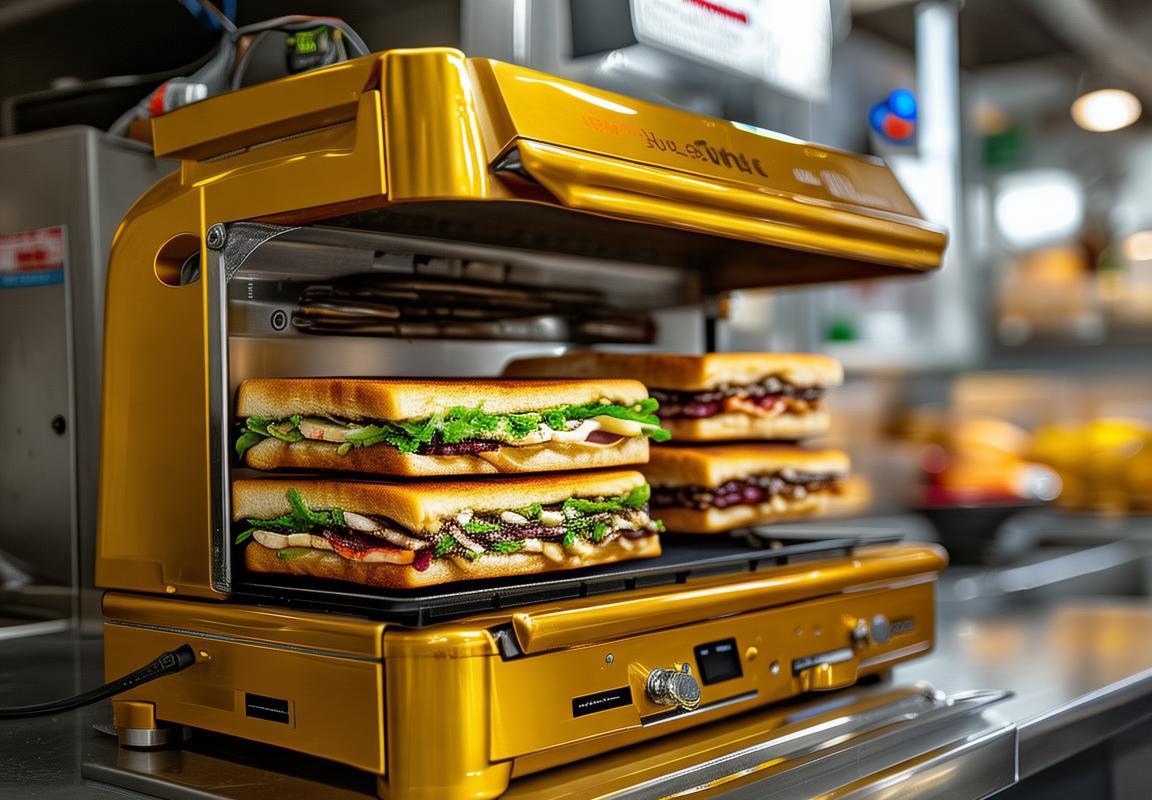
Challenges and Opportunities
In the dynamic landscape of the commercial panini press market, several challenges and opportunities coexist, shaping the future trajectory of the industry. Navigating these factors is crucial for manufacturers and retailers alike.
The rise of health-conscious consumers has introduced a challenge in terms of product development. As people seek out healthier alternatives to traditional fast food, manufacturers must innovate to offer low-fat, high-protein panini options. This shift requires not just a change in recipe formulation but also in the cooking technology to ensure that the taste and texture of the panini remain appealing.
On the flip side, the opportunity lies in the customization trend. Consumers today are more likely to purchase products that cater to their specific needs and preferences. This opens doors for manufacturers to create panini presses that can accommodate various bread types, from artisanal loaves to gluten-free options. The ability to customize cooking times and temperatures further enhances the value proposition for both restaurants and consumers.
Another challenge is the competition from other cooking appliances. With the popularity of countertop grills, ovens, and induction cooktops, panini presses must differentiate themselves. The opportunity here is to integrate smart technology, such as touchscreens and Wi-Fi connectivity, which can provide users with real-time cooking guidance and even allow for remote operation.
The need for energy efficiency has become a significant challenge for manufacturers. As environmental concerns grow, so does the pressure to produce appliances that consume less energy. This challenge is met with the opportunity to develop panini presses that not only meet energy-saving standards but also offer a cost-effective solution for businesses operating on tight budgets.
In the realm of sustainability, there’s a growing challenge related to the use of plastics and other non-biodegradable materials. Manufacturers must address this by exploring eco-friendly alternatives, such as biodegradable packaging and recycled materials for the appliances themselves. The opportunity here is clear: brands that can demonstrate a commitment to sustainability may gain a competitive edge and appeal to a broader customer base.
The integration of smart features is not without its challenges. Ensuring that these devices are user-friendly and compatible with various smart home systems can be complex. However, the opportunity lies in the ability to offer added convenience and control. By providing users with the ability to monitor and adjust their panini presses remotely, manufacturers can cater to the busy lifestyles of today’s consumers.
Another challenge is the global supply chain disruptions. The pandemic has highlighted the fragility of supply chains, leading to delays and increased costs. The opportunity in this lies in diversifying supply sources and adopting more resilient supply chain management practices. This not only reduces the risk of future disruptions but also allows manufacturers to be more responsive to market demands.
The challenge of market saturation is a significant issue in the commercial panini press market. With numerous brands and models available, standing out can be difficult. The opportunity here is to focus on niche markets or unique selling propositions (USPs). Whether it’s a specialized press for vegan or vegetarian paninis or a panini press that doubles as a sandwich toaster, finding a unique angle can help a brand carve out its own space in the market.
Lastly, the challenge of adapting to new culinary trends is ongoing. The food industry is ever-evolving, and panini presses must be flexible enough to accommodate new ingredients and cooking techniques. The opportunity here is to foster innovation within the industry, encouraging manufacturers to collaborate with chefs and food scientists to create cutting-edge appliances that not only cook but also inspire new recipes and culinary experiences.

Future Outlook and Predictions
In recent years, the future outlook for the commercial panini press market has been shaped by a blend of technological advancements, evolving consumer preferences, and economic factors. Here’s a glimpse into what might lie ahead:
The rise of health-conscious consumers has spurred the demand for healthier fast-food options. As a result, commercial panini presses, which offer customizable, fresh, and often healthier sandwiches, are becoming increasingly popular. This shift in consumer behavior is likely to continue, further driving market growth.
Technological innovations have not only improved the efficiency and ease of use of commercial panini presses but have also expanded their capabilities. Features like variable heat settings, programmable cooking times, and non-stick surfaces are becoming standard, enhancing the user experience and potentially broadening the market’s appeal.
The rise of foodservice apps and delivery services has opened new avenues for commercial panini presses. Quick-service restaurants (QSRs) and food trucks are integrating these presses into their menus to offer a variety of panini options. This integration has led to a surge in demand from these establishments, creating new opportunities for manufacturers.
Sustainability has become a key consideration in the foodservice industry. As a result, there’s a growing preference for commercial panini presses that are energy-efficient and made from environmentally friendly materials. Manufacturers that can adapt to these sustainability trends are likely to gain a competitive edge.
The globalization of food cultures has introduced new flavors and ingredients to the commercial panini press market. International QSR chains and local eateries alike are experimenting with different types of panini, which can lead to increased variety and complexity in the market, attracting a wider range of consumers.
Regulatory bodies are also playing a role in shaping the future of the commercial panini press market. There are ongoing discussions about food safety standards and energy efficiency regulations that could impact manufacturing processes and product design.
In terms of regional dynamics, the Asia-Pacific region is expected to see significant growth due to its expanding middle class and increasing demand for convenience foods. Meanwhile, the mature markets of Europe and North America are likely to see steady growth, driven by technological advancements and changing consumer tastes.
The rise of mobile kitchens and pop-up restaurants is another trend that could benefit the commercial panini press market. These flexible and portable units are ideal for businesses that need to set up quickly and efficiently, offering a solution that is both convenient and adaptable.
The integration of smart technology into commercial panini presses is also on the horizon. Imagine a press that can monitor its own performance, predict maintenance needs, and even adjust settings based on the type of food being cooked. Such innovations could revolutionize the way foodservice operators use their equipment.
Finally, the commercial panini press market is poised to benefit from cross-industry collaborations. For example, partnerships between appliance manufacturers and foodservice providers could lead to the development of specialized presses tailored to specific types of cuisine or cooking techniques.
In conclusion, while challenges such as competition, regulatory changes, and economic fluctuations will always be present, the commercial panini press market is filled with opportunities for growth and innovation. By staying attuned to consumer preferences, embracing technological advancements, and navigating the regulatory landscape effectively, manufacturers can continue to thrive in this dynamic sector.
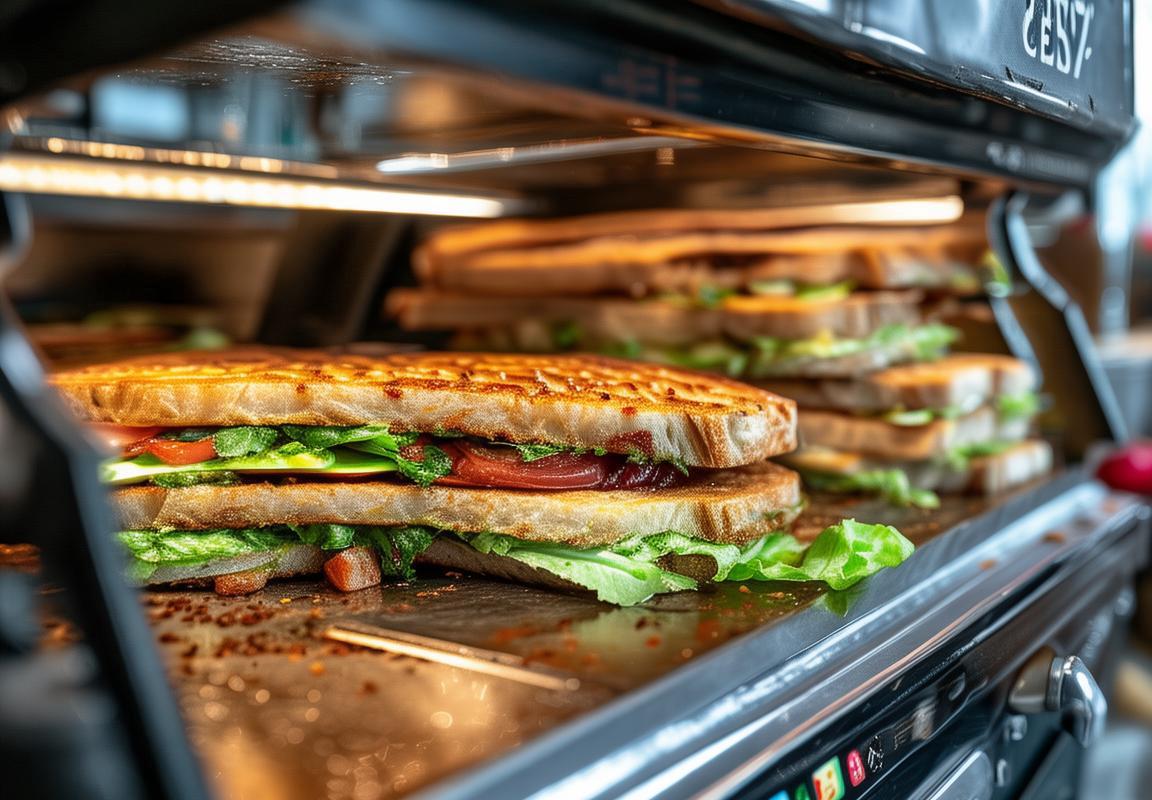
Conclusion: The Potential of Commercial Panini Press in the Global Kitchen Appliances Sector
In the ever-evolving landscape of the global kitchen appliances sector, the commercial panini press has carved out a niche for itself. As a staple in cafes, delis, and foodservice establishments, its potential remains vast and untapped in many markets. Let’s delve into the multifaceted potential of this versatile appliance.
The commercial panini press has seen a surge in popularity due to its ability to quickly and efficiently cook a variety of sandwiches. Its compact design and ease of use make it a favorite among operators looking to enhance their menu offerings without the need for extensive kitchen space or complex machinery. The appliance’s versatility extends beyond just sandwiches, with some models capable of grilling vegetables, cheese, and even small cuts of meat, making it a valuable addition to any kitchen.
The market for commercial panini presses is not without its challenges. Competition is fierce, with numerous manufacturers vying for a share of the growing demand. This competition has led to a surge in innovation, with manufacturers pushing the boundaries of what a panini press can do. From non-stick surfaces that require minimal cleaning to advanced temperature control systems that ensure consistent cooking, the industry is constantly evolving to meet the needs of both consumers and commercial users.
Despite the challenges, there are numerous opportunities for growth. The rise of health-conscious consumers has led to a demand for fresh, made-to-order sandwiches, and the commercial panini press is perfectly suited to meet this need. Additionally, the increasing popularity of fast-casual dining concepts has created a market for quick, high-quality food options, further boosting the demand for commercial panini presses.
One cannot ignore the impact of technology on the commercial panini press market. Smart features, such as touchscreens and Bluetooth connectivity, are becoming more common, allowing operators to customize settings and monitor cooking times remotely. These advancements not only enhance the user experience but also open up new possibilities for data analysis and predictive maintenance, leading to increased efficiency and reduced downtime.
Market segmentation plays a crucial role in the commercial panini press industry. There are several key segments to consider, including full-service restaurants, quick-service restaurants (QSRs), and foodservice establishments like delis and cafes. Each segment has its unique requirements and preferences, from the size and capacity of the press to the specific features needed to meet their menu offerings.
The regulatory environment is another critical factor in the commercial panini press market. Food safety and hygiene regulations are stringent, and manufacturers must ensure their products comply with these standards. This often involves rigorous testing and certification processes, which can be costly and time-consuming. However, for those who navigate this landscape successfully, the rewards can be substantial.
The industry standards for commercial panini presses are also evolving. Energy efficiency, for example, has become a significant factor in the design and manufacturing process. As consumers and businesses alike become more environmentally conscious, the demand for energy-efficient appliances is on the rise. This shift has led to the development of more efficient heating elements and better insulation, reducing energy consumption and operating costs.
Challenges and opportunities often go hand in hand. The commercial panini press market faces challenges such as the need for continuous innovation, adapting to changing consumer preferences, and meeting stringent regulatory requirements. However, these same challenges present opportunities for manufacturers to differentiate their products, develop new technologies, and expand their market reach.
Looking ahead, the future of the commercial panini press in the global kitchen appliances sector appears promising. The growing trend of health and wellness will likely continue to drive demand for fresh, made-to-order sandwiches. As technology advances, we can expect to see even more innovative features and designs that cater to the needs of both operators and consumers.
The potential of the commercial panini press is not limited to the foodservice industry. There is also a growing interest in home-use models, as consumers seek to replicate the convenience and quality of commercial-grade appliances in their own kitchens. This dual market presents a significant opportunity for manufacturers to expand their product lines and reach a broader audience.
In conclusion, the commercial panini press has a bright future in the global kitchen appliances sector. Its versatility, ease of use, and the growing demand for fresh, high-quality food options make it a valuable addition to any kitchen. As the industry continues to innovate and adapt to the needs of consumers and operators, the potential for growth and success remains substantial.